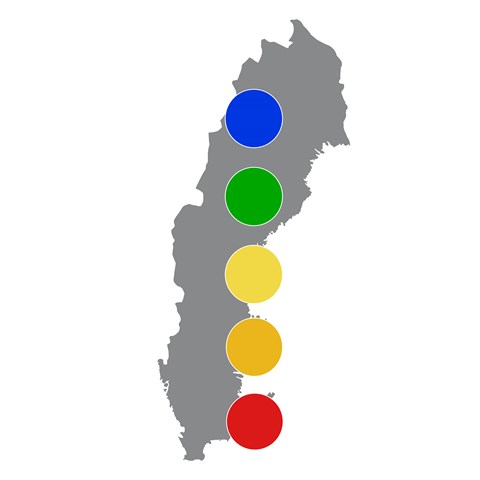Contact
Department of Aquatic Sciences and Assessment, Division of Geochemistry and Hydrology

During the autumn of 2022, an updated way of assessing the ecological status of water has been introduced in Sweden. The assessments apply to water in Sweden and are now harmonised with assessments of water in the rest of Europe. The updated tool means that more lakes can be classified with good status.
The goal is for all waters in Europe to achieve "good" status. In order to determine the ecological status of water, there are rules that determine what must be analysed and what tools everyone must use. In this way, it becomes clear whether the water has a good status or not, whether measures are needed and whether the mitigations that have been carried out have had the desired effect.
Water researchers at SLU work in several different ways to support the water administration's efforts toward achieving the environmental quality goals and the EU's framework water directive. One way to use the knowledge available at SLU is to develop fruitful tools for status classifications, so-called Ecological Quality Criteria. These have been developed for several different biological and chemical quality factors. For nutrients, new ways of calculating the reference value have now been developed.
The new Ecological Quality Criteria mean a harmonisation with the reporting to HELCOM. Jens Fölster, researcher at the Department of Aquatic Sciences and Assessment, SLU, highlights that it is important to be able to compare the analyses.
- In this way, it becomes synchronised and clear that we mean the same thing when we classify the status of our waters and when we write our reports, says Jens.
Finding reference values for the nutrient content of water is important according to the water directive that applies within the EU. Different types of regions have different reference values. The reference value is taken from unaffected waters. Jens has worked on what unaffected water is, in connection with work with the new assessment bases, and the development of models to calculate reference values for phosphorus for each individual lake or watercourse:
- In the previous assessment bases, the calculations were based on lakes and watercourses in areas without agriculture, because they were considered unaffected, says Jens. But the reference base is skewed because you grow the land which is naturally rich in nutrients.
With the new assessment criteria, the calculation is based on the background levels produced in connection with the reporting to HELCOM.
In order to find good reference values, environmental historical studies can be important. Remains of animals and plants collect in lake sediments, which is why the sediments can be used as historical archives of the water. Shell from diatoms are collected and remain in the sediments and can indicate the historical nutrient content of the water because certain types of diatoms thrive in certain nutrient content.
In order to find new Ecological Quality Criteria, the researchers at SLU have collaborated with various parts of water management in Sweden. During the work, data from 600 lakes and 1,000 watercourses will be analysed according to both the old and new assessment criteria.
When the first test calculations were carried out using the new Ecological Quality Criteria, watercourses received a slightly worse status. For lakes outside agricultural areas (areas that have less than 10% agricultural land), the new classification becomes moderate status or worse.
- But the lakes in agricultural areas actually generally get a better status, says Jens. The new Ecological Quality Criteria take better account of the area's natural nutrient level.
Although the new Ecological Quality Criteria have now started to be introduced, there is still some time left before we can see the finished classifications. This is planned to be reported according to the existing report cycle where ecological status is assessed every six years.
Fölster, J., Markensten, H., Sandström, S., Widén Nilsson, E., (2021). Förslag till bedömningsgrunder för näringsämnen i sjöar och vattendrag. Sveriges lantbruksuniversitet, Rapport / Sveriges lantbruksuniversitet, Institutionen för vatten och miljö Rapport 2021, number: 2021:15. https://res.slu.se/id/publ/114481
Moldan, F., Jutterström, S., Stadmark, J., Holmgren, K., Fölster, J. (2022). Bedömningsgrunder försurning - tester av MAGIC-biblioteket. IVL Svenska Miljöinstitutet, IVL Rapport 2022, number: 695. https://res.slu.se/id/publ/118909
Myrstener, E. och Fölster, J. (2022). Improved reference values for phosphorus in Swedish agricultural lakes, Lake sediment records of historical concentrations in Sweden and near-by countries. Swedish University of Agricultural Sciences, SLU, Department of Aquatic Sciences and Assessment, Report 2022:11. Not yet published.